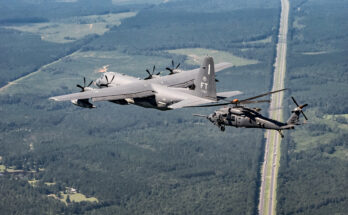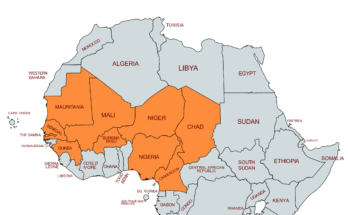With China continuing to ramp up coercion operations in the wake of U.S. House Speaker Nancy Pelosi’s visit to Taiwan on August 2, the government of Taiwan’s president, Tsai Ing-wen, has proposed a 13.9 percent year-on-year nominal increase to the defense budget for 2023. The ramp-up in spending would bring the topline defense budget to a record TWD586.3 billion ($19.4 billion), the largest such year-on-year hike since 2008, when the budget rose by 16 percent.
The proposed hike comes in the wake of increased military activity by China, including large-scale wargames around the island of Taiwan, as well as the deployment of 366 aircraft sorties against the island since August 2. The invasion of Ukraine by Russia back in February has also prompted concerns in Taipei, where some government officials fear that China might act on its goal of absorbing Taiwan while the U.S. and its NATO allies are distracted by the war in Eastern Europe.
Taiwan has proposed a record high $19 billion in defense spending for next year, a double-digit increase on 2022 https://t.co/5oaDtNeRL2 pic.twitter.com/xilQZPVjjC
— Reuters (@Reuters) August 25, 2022
While relations between the mainland communist People’s Republic of China (PRC) and Taiwan were already fraught with tension, the trip by Speaker Pelosi to the island sparked a furious backlash by Beijing. Although Taiwan is a de facto independent state, its de jure political status remains in question – at least in the eyes of the Communist Party leadership of the PRC. The PRC maintains that Taiwan is an indisputable part of mainland China – that there is only “One China” – and that Taiwan exists as a “renegade province” that should be reunited with the mainland, through force if necessary.
Over decades, Beijing has worked to erode Taiwan’s diplomatic recognition and threaten countries that seek to deepen ties with the island state. The trip by Speaker Pelosi – viewed by Beijing as interference in its internal affairs – provided a pretext for China to continue ramping up diplomatic, economic, information and military pressure on Taiwan.
From the Taiwanese perspective, the days of diplomatic outreach to mainland China as favored by the previous administration of President Ma Ying-jeou are fading rapidly. Instead, a full reversal of the decade-long slide in Taiwan’s defense focus is now picking up steam – and none too soon.
Today, China annually spends more than 15 times what Taiwan does on defense, with the gap steadily widening.
But under Tsai Ing-wen’s administration, defense spending has steadily increased over the four years since 2018. This resulted in real-term growth of 5 percent, 19 percent, 10 percent, and 2.5 percent from 2019 to 2022.
However, bowing to economic, fiscal, and demographic realities, Taiwan is unable – and unwilling – to match China on a 1:1 or even 10:1 military investment ratio. Instead, Taiwan must focus on deterrence capabilities and the fashioning of a highly competent, extremely motivated military that is capable of countering China’s significant quantifiable advantages in manpower and military platforms.
In short, Taiwan has gradually been confronted with the need to revise its approach and embrace a so-called porcupine strategy shared by Singapore. This approach requires the country in question to equip and field a military capable of holding a larger, more powerful opponent at bay.
This strategy emerged in 2017, when the Chief of the General Staff, Adm. Lee Hsi-ming, unveiled the Overall Defense Concept (ODC). The result is an asymmetric, rather than traditional, approach to defense that involves targeting an invader closer to shore rather than defending the Taiwan Strait in depth, and prioritizes survivability and rapidly deployable, mobile, short-range defense systems.
The two-phase approach involves defending Taiwan along its littoral domain (which extends 100 km from the island) and then destroying any force that penetrates beach approaches or achieves access to beach heads (40 km outward).
For the first – or littoral – phase, Taiwan plans to rely on its naval surface fleet, plus a new class of fast attack catamarans, all armed with anti-ship cruise missiles of the Hsiung Feng family.
The second phase comprises everything from armed drones and remotely controlled sentry guns stationed on outlying islets to “smart” sea mines capable of evading enemy minesweepers and unmarked vehicles armed with anti-ship missiles. Precision artillery and area-effect weapons (such as a multiple launch rocket system with cluster munitions) will counter approaching vessels and enemy troops that embark ashore.
Conventional deterrence remains very much part of the equation, with ongoing investments in combat aircraft, submarines, and surface combatants remaining on the procurement planning list.
The latest defense spending proposal for 2023 includes an additional TWD108.3 billion ($3.58 billion) for combat aircraft (F-16Vs) and other systems, as well as “special funds” of an undisclosed nature for the Defense Ministry. This funding is reflective of the Tsai Ing-wen administration’s “special budget” aimed at complementing – while remaining outside of – the overall annual defense allocations across a five-year period.
This plan, approved by the Legislative Yuan on January 11, 2022, involves TWD240 billion ($7.9 billion) in extraordinary funding to be spent on priority acquisitions of local systems. These include seven types of weapon systems, including shore-based anti-ship missiles, ground-based air defense systems, unmanned aerial vehicles (UAVs), air-to-ground cruise missile systems, surface-to-surface cruise missile systems, high-performance ships, and naval weapons systems for use by Coast Guard vessels in the event of combat operations. This funding also supports the ongoing development and production of eight diesel-electric submarines.
Dan Darling is Forecast International’s director of military and defense markets. In this role, Dan oversees a team of analysts tasked with covering everything from budgeting to weapons systems to defense electronics and military aerospace. Additionally, for over 17 years Dan has, at various times, authored the International Military Markets reports for Europe, Eurasia, the Middle East and the Asia-Pacific region.
Dan's work has been cited in Defense News, Real Clear Defense, Asian Military Review, Al Jazeera, and Financial Express, among others, and he has also contributed commentary to The Diplomat, The National Interest and World Politics Review. He has been quoted in Arabian Business, the Financial Times, Flight International, The New York Times, Bloomberg and National Defense Magazine.
In addition, Dan has made guest appearances on the online radio show Midrats and on The Media Line, as well as The Red Line Podcast, plus media appearances on France 24 and World Is One News (WION).




